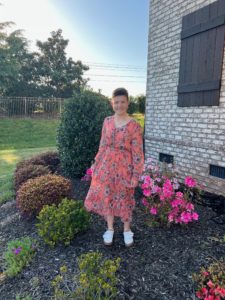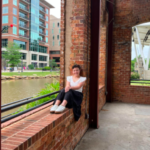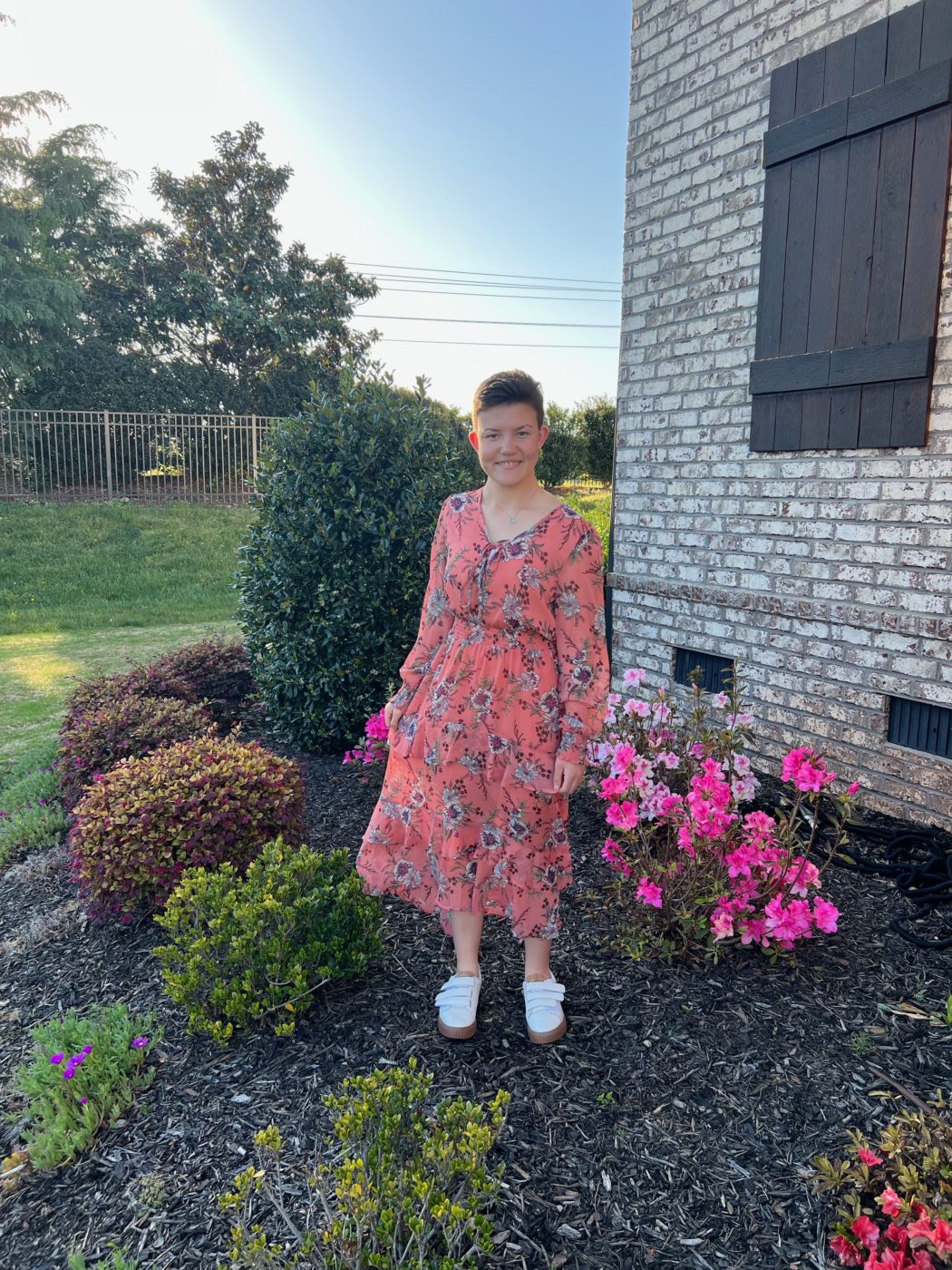 On my first real date with a girl, I went to a drag show at Resident Culture Brewery in Charlotte. She invited me to a Pride Prom, an event designed to recreate the traditional dance hosted at the end of high school.
On my first real date with a girl, I went to a drag show at Resident Culture Brewery in Charlotte. She invited me to a Pride Prom, an event designed to recreate the traditional dance hosted at the end of high school.
Usually, a boy asks a girl out. This time, it was for queer adults who may not have gotten the opportunity to attend as their true selves. The theme was “The Neon Beyond.”
I wore a neon shirt underneath a black two-piece suit, convinced I needed to “look the part” now that I had been out as a lesbian for two years. I was excited to experience the LGBTQIA+ community in-person after quarantine.
Although we were still in the middle of the pandemic and wore masks to keep ourselves safe, I felt liberated from the constraints of the “mask” I used to wear to hide my identity for nineteen years. I couldn’t wait to be surrounded by other people who were just like me. I expected it to be the time of my life. This event signaled three big milestones post-coming out: being asked out, going to a Pride event, and seeing a real drag show at a bar.
When we arrived, music filled the air at full volume. It was an odd combination of reggae and country, which only made it more evident that this was the venue’s first Pride event.
Outside, a single rainbow flag hung over the wooden benches. Multiple guests lined up to order their drinks at the bar, their eyes focused on the extravagant list of alcoholic drinks that sounded more like potions than digestible liquids, with oddly specific names like “Human Potential,” “Radical Empathy,” “Brave Noise,” “Forever Alone,” and my personal favorite: “Normal Is Dead.”
We sat beside a gay couple and their poodle, who wore a rainbow bandana around his collar. I tried to soak in the colorful environment, but quickly felt my vision spin at the smell of craft beer on my date’s breath and my throat closing up at the accentuated one-drop beats.
My date tried to ask me questions to get to know me better, but the small talk only increased the bubbling anxiety stuck in my chest. I could barely focus on my own breathing, much less inquiries about my writing or the last book I read. I didn’t know how to tell her that I needed to leave without disappointing her. In silence, I watched the circles of people dancing.
I felt isolated. I wished I could share their joy, too.
I tried to dance with the group to iconic music like Diana Ross’s “I’m Coming Out,” desperate to belong in the crowd, but I quickly felt more alone than I had ever been.
In my excitement to embrace my queerness, I completely abandoned my needs as an autistic person. I don’t drink, either, so the space seemed designed to exile me.
In each essay I write, I always feel like I’m telling the same story over and over again: girl is trapped by society, girl escapes the maze of herself, girl learns to accept her oddities. Like Sisyphus in Greek mythology, I am always pushing my rock (aka, my need to fit in) up the hill.
And I’m waiting to see the day it will finally topple over and shatter into a million little pieces.
Then I realized I couldn’t hold myself to unrealistic standards that weren’t designed for my abilities, and that being honest about my autistic identity was best for my relationship and well-being. I decided to let my date know I was on the spectrum.
My sexuality and disability are not optional. They are the lenses through which I experience the world. They do not define all of me, yet I cannot deny that they equally are intrinsic to who I am as a human being.
I am queer. I am autistic. I do not have the privilege to pick and choose which one affects my life the most. Both identities shape who I am.
From an outsider’s perspective, I looked no different than anyone else: I sang along to the lyrics. I attempted to dance by mimicking the movements of everyone else. I engaged in brief moments of romantic failures.
She reassured me that she didn’t have a problem with who I was. We briefly held hands as we swayed to “Here We Go Again” from “Mamma Mia,” then I watched my date excuse herself from the floor because her feet hurt. Did I mess up? Did she know I didn’t want to be there anymore? I wondered as I joined her on the benches.
My non-binary friend Athena wasn’t prevented from having fun because of their disability; they were embraced by a group of strangers and navigated through the unfamiliar territory using their walking stick confidently. Why couldn’t I?
Because I refused to acknowledge my disability around others.
After we went out that night, I realized I didn’t share the same feelings as she did, and I asked to remain friends. Despite how things ended, I’m grateful for how I’ve evolved from the experience.
I’ve learned these identities each have their own challenges. Many LGBTQIA+ gatherings are in loud, alcohol-centric environments where sober, neurodivergent members of the community are unintentionally excluded. So even though I would love to attend a local trivia night, I can’t go due to my risk of experiencing sensory overload or having a meltdown. And sharing that with potential partners is hard.
Each Pride Month, I wish there were neurodivergent-friendly alternatives held at coffee shops instead of breweries. By making these events more accessible to disabled people, we as a community can show everyone in the disabled, LGBTQIA+ community that they deserve to be not only included, but celebrated, too.
Women AdvaNCe compiled a list of Pride Month events happening this June! You can check it out here.
 Lara Boyle is a writer who enjoys coffee shops, reading and used bookstores. She studies Creative Writing at Queens University of Charlotte. She is a staff writer for The Farside Review. You can find her on social media @laraboylewrites. Her work has been published in HuffPost Personal, Zenith Literary Magazine, Herstry blog, and more.
Lara Boyle is a writer who enjoys coffee shops, reading and used bookstores. She studies Creative Writing at Queens University of Charlotte. She is a staff writer for The Farside Review. You can find her on social media @laraboylewrites. Her work has been published in HuffPost Personal, Zenith Literary Magazine, Herstry blog, and more.

There are no comments
Add yours